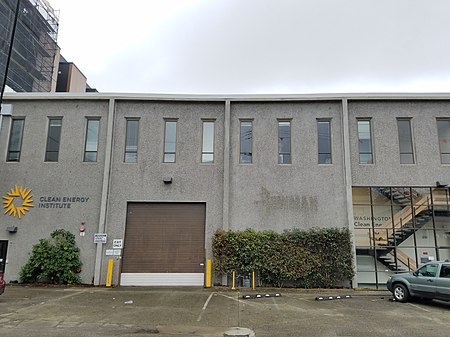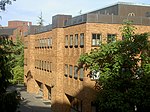Clean Energy Institute
2013 establishments in Washington (state)AC with 0 elementsEnergy research institutesRenewable energy in the United StatesUniversity of Washington

The Clean Energy Institute (CEI) is a research institute at the University of Washington. Founded in 2013, the institute maintains several facilities across the university's Seattle campus and supports renewable energy technology research, education, entrepreneurship, and outreach. The institute is under the direction of Daniel T. Schwartz, PhD.
Excerpt from the Wikipedia article Clean Energy Institute (License: CC BY-SA 3.0, Authors, Images).Clean Energy Institute
West Stevens Way Northeast, Seattle University District
Geographical coordinates (GPS) Address Nearby Places Show on map
Geographical coordinates (GPS)
| Latitude | Longitude |
|---|---|
| N 47.654388888889 ° | E -122.30983333333 ° |
Address
Molecular Engineering and Sciences
West Stevens Way Northeast 3946
98105 Seattle, University District
Washington, United States
Open on Google Maps









